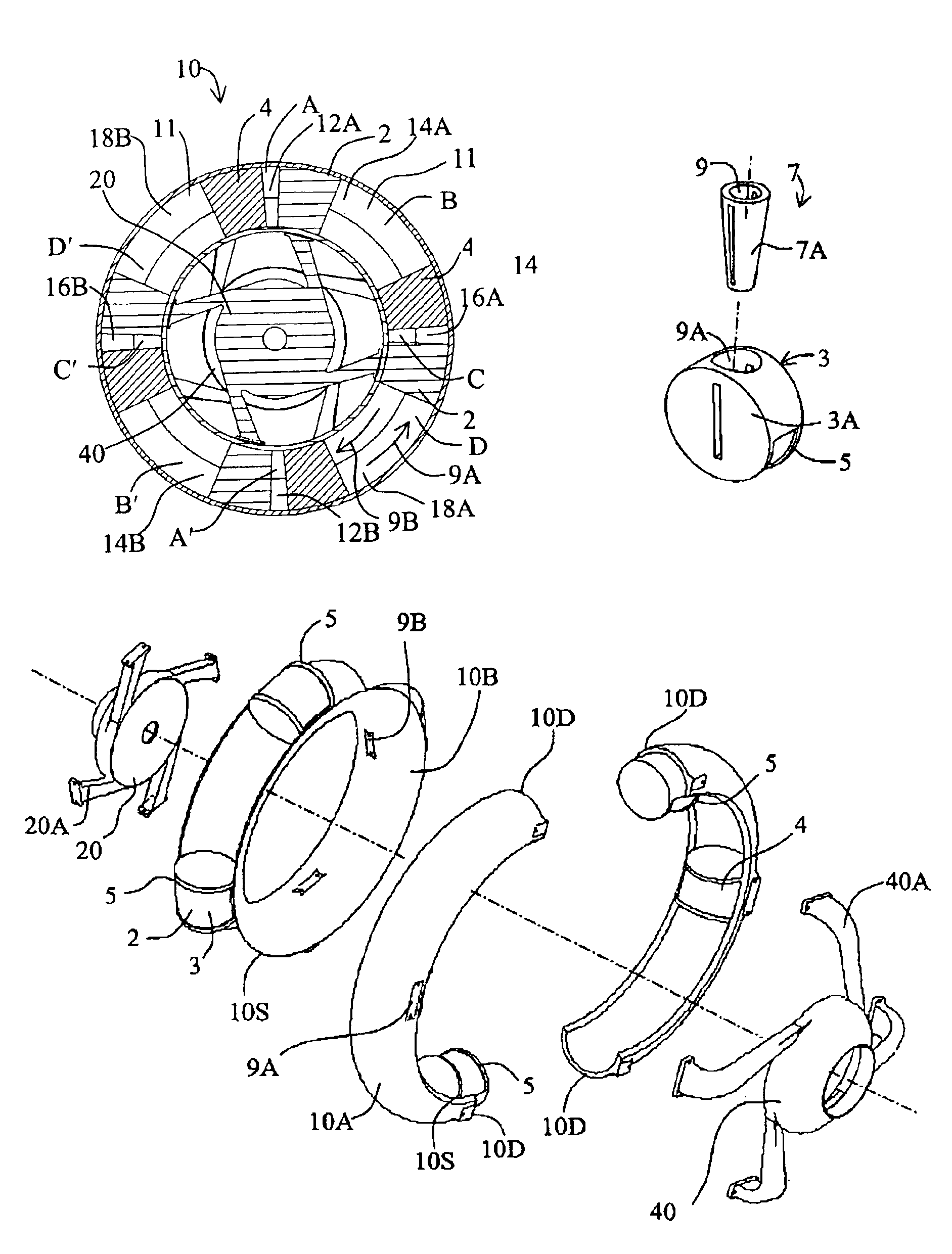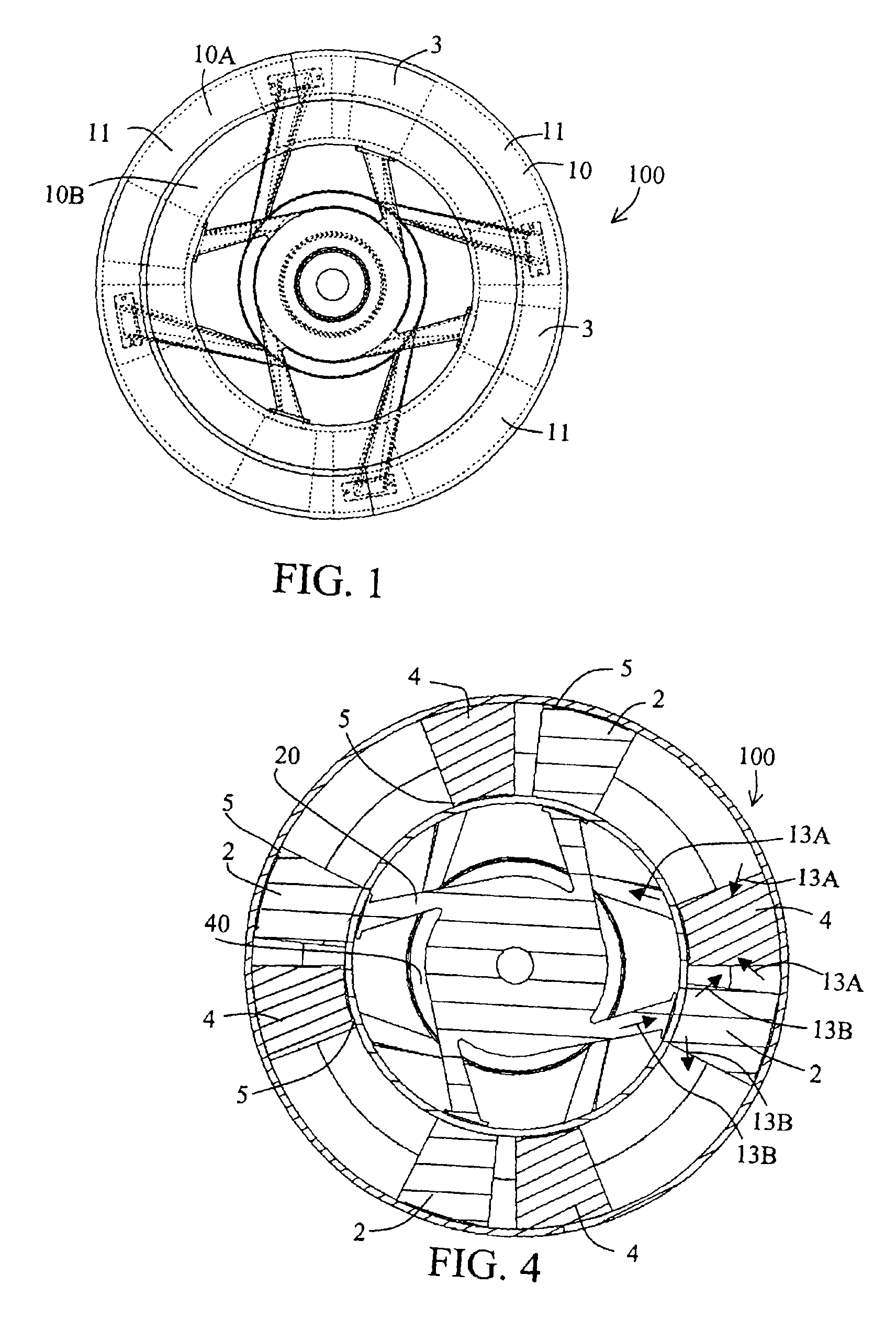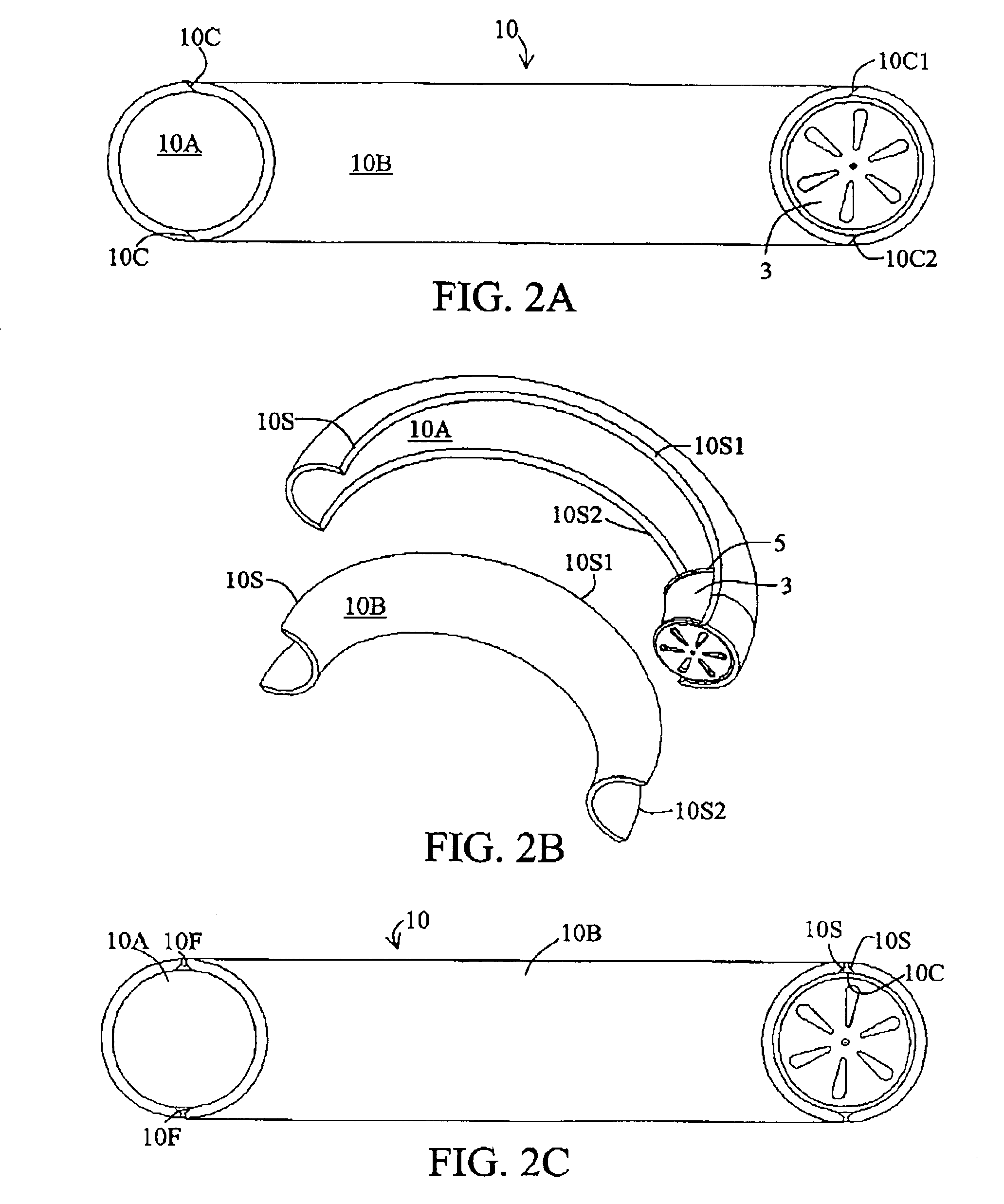Toroidal internal combustion engine
a technology of internal combustion engine and turbine engine, which is applied in the direction of liquid fuel engine, machine/engine, mechanical apparatus, etc., can solve the problems of frictional work, inherently inefficient transfer of work output from linear to rotational motion, and energy released by combustion, so as to reduce emissions, reduce frictional work, and improve work efficiency
- Summary
- Abstract
- Description
- Claims
- Application Information
AI Technical Summary
Benefits of technology
Problems solved by technology
Method used
Image
Examples
Embodiment Construction
[0045]FIG. 1 is a schematic illustration of a toroidal IC engine 100 according to the invention. The toroidal IC engine 100 comprises an engine ring 10 with a plurality of pistons 3. For purposes of illustration and simplicity, the description of the toroidal IC engine 100 will be based on a four-stroke engine having eight pistons 3 and eight chambers 11. It should be understood, however, that the toroidal IC engine 100 is configurable as a two-stroke or a four-stroke engine, with any number of pistons greater than one, depending on the size and power requirements of the engine.
[0046]FIGS. 2A-2B illustrate the basic construction of the engine ring 10. The engine ring 10 is a split ring having an outer engine ring 10A and an inner engine ring 10B. As shown, both the inner and outer engine rings 10B, 10A are C-shaped and have seam edges 10S which include a first seam edge 10S1 and a second seam edge 10S2. The outer engine ring 10A and inner engine ring 10B are joined together along th...
PUM
 Login to View More
Login to View More Abstract
Description
Claims
Application Information
 Login to View More
Login to View More - R&D
- Intellectual Property
- Life Sciences
- Materials
- Tech Scout
- Unparalleled Data Quality
- Higher Quality Content
- 60% Fewer Hallucinations
Browse by: Latest US Patents, China's latest patents, Technical Efficacy Thesaurus, Application Domain, Technology Topic, Popular Technical Reports.
© 2025 PatSnap. All rights reserved.Legal|Privacy policy|Modern Slavery Act Transparency Statement|Sitemap|About US| Contact US: help@patsnap.com



